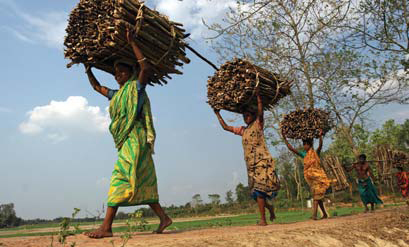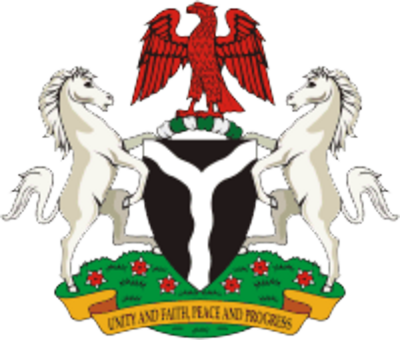Nigeria's Second National Communication
Project Overview
The creation of a National Communication offers countries the opportunity to contribute with technically sound studies and information that can be used for designing mitigation and adaptation measures, and project proposals that can and will help increase their resilience to the impacts of climate change. Activities generally include: V&A assessments, Greenhouse Gas Inventory preparation, Mitigation Analysis or Education, and awareness raising activities. The ultimate goal is the integration of climate change considerations into relevant social, economic and environmental policies and actions.
Nigeria, Africa's most populous country, has identified several priority adaptation actions which include: diversification and extension of protected areas for the conservation of ecosystems that are most vulnerable to climate change and sea level rise; maintaining ecological structure and processes at all levels and reducing existing pressure on natural ecosystems; reducing population and ecosystem vulnerability to climate change and reorientation of their evolution towards higher resistance to the changes; incorporating biodiversity conservation into adaptation strategies in the other sectors of the Nigerian economy; establishment and maintenance of protected area, and the active management of wild populations outside of protected areas; development and implementation of programmes for restricted areas and buffer zones, resource harvesting on a sustainable basis, ecological restoration, sustainable management and agro ecosystems; and monitoring to evaluate species and ecosystems stability from climate change perspective.
To view progress on Nigeria's SNC click here.
Project Details
In order to minimize the negative impact of climate change on the ecosystems, water resources, socioeconomic domains, a number of adaptation measures are open to Nigeria. They range from education to inform and encourage behavioural change to changing location and use, preventing effects, modifying threats, and sharing loss.
Key Vulnerabilities:
- Agriculture/Food Security
- Water Resources
- Public Health
- Fisheries
- Terrestrial Ecosystems
- Tourism
- Energy
In Nigeria, in addition to autonomous adaptation, there must also be planned adaptation and adoption of strategies. These will include, among others: Diversification and extension of protected areas for the conservation of ecosystems that are most vulnerable to climate change and sea level rise; Maintaining ecological structure and processes at all levels and reducing existing pressure on natural ecosystems; Reducing population and ecosystem vulnerability to climate change and reorientation of their evolution towards higher resistance to the changes; Incorporating biodiversity conservation into adaptation strategies in the other sectors of the Nigerian economy; Establishment and maintenance of protected area (in situ preservation), and the active management of wild populations outside of protected areas (ex situ management); Development and implementation of programmes for restricted areas and buffer zones, resource harvesting on a sustainable basis, ecological restoration, sustainable management and agro ecosystems; and Monitoring to evaluate species and ecosystems stability from climate change perspective.
With an estimated population of over 170 million, the Federal Republic of Nigeria is the most populous country in Africa. Its 923,800 square kilometres occupies about 14% of West Africa. The country lies between 4oN and 14oN and between 3oE and 15oE. It is bordered on the north, east, and west by Niger, the Cameroon, and Benin Republic, respectively. The Atlantic Ocean forms the southern boundary. The total length of the coastline of the country is about 850 km.
The highest areas are in the east, north, and west, where land is generally over 1,500 metres, 600 metres, and 300 metres respectively. The low-lying areas, which are generally below 300 metres, lie along the coast and along the valleys of the main rivers. (Fig. 1.3). The Udi Plateau, which lies to the east, however attains a height of over 300 meters and this breaks the monotony of the coastal lowlands, which are also characterized by creeks and lagoons on both sides of the Niger Delta. West of the Niger Delta, the coastal areas consist of lagoons and swamps, separated from the open sea, by a strip of sandy land, which varies in width from 2 to 16 kilometres. The Lagos entrance is the only major outlet through which the lagoons and creeks drain into the sea. The section which lies in the east of the Niger Delta consists of creeks and swamps which stretch from Opobo town through the Cross River estuary to the border with the Cameroon.
The Niger Delta is a low-lying region, cut up by a complicated system of natural channels through which the River Niger finds its way to the sea. It is made up of three distinct subregions. They are (a) freshwater zone (b) the mangrove swamps, and (c) the zone of coastal sands and beach ridges. The freshwater zone, which starts from the apex of the delta, just below the town of Aboh, is essentially an extension of the lower Niger floodplains. The numerous water channels in this zone are bordered by natural levees, which provide the sites for most of the settlements and farmlands in the zone. The mangrove swamps, covering about 10,360 square kilometers and located to the south of the freshwater swamps, are sparsely settled. Strips of sandy beaches and ridges, which vary from a few meters to 16 kilometers, separate the mangrove swamps from the open sea. In addition to natural levees, ox-bow lakes are common landforms in the Niger Delta. The high rainfall in the region, coupled with the abundance of surface water and the flat terrain, create a serious drainage problem and makes road construction very difficult.
Key Results and Outputs
- Sustainable development and the integration of climate change concerns into medium and long-term planning
- Inventories of anthropogenic emissions by sources and removals by sinks of greenhouse gases
- Measures contributing to addressing climate change
- Research and systematic observation
- Climate change impacts, adaptation measures and response strategies
- Education, training and public awareness
Monitoring and Evaluation
In 1992, countries joined an international treaty, the United Nations Framework Convention on Climate Change, to cooperatively consider what they could do to limit average global temperature increases and the resulting climate change, and to cope with whatever impacts were, by then, inevitable.
Parties to the Convention must submit national reports on implementation of the Convention to the Conference of the Parties (COP). The required contents of national communications and the timetable for their submission are different for Annex I and non-Annex I Parties. This is in accordance with the principle of "common but differentiated responsibilities" enshrined in the Convention.
The core elements of the national communications for both Annex I and non-Annex I Parties are information on emissions and removals of greenhouse gases (GHGs) and details of the activities a Party has undertaken to implement the Convention. National communications usually contain information on national circumstances, vulnerability assessment, financial resources and transfer of technology, and education, training and public awareness.
Since 1994, governments have invested significant time and resources in the preparation, collection and validation of data on GHG emissions, and the COP has made determined efforts to improve the quality and consistency of the data, which are ensured by established guidelines for reporting. Non-Annex I Parties receive financial and technical assistance in preparing their national communications, facilitated by the UNFCCC secretariat.




